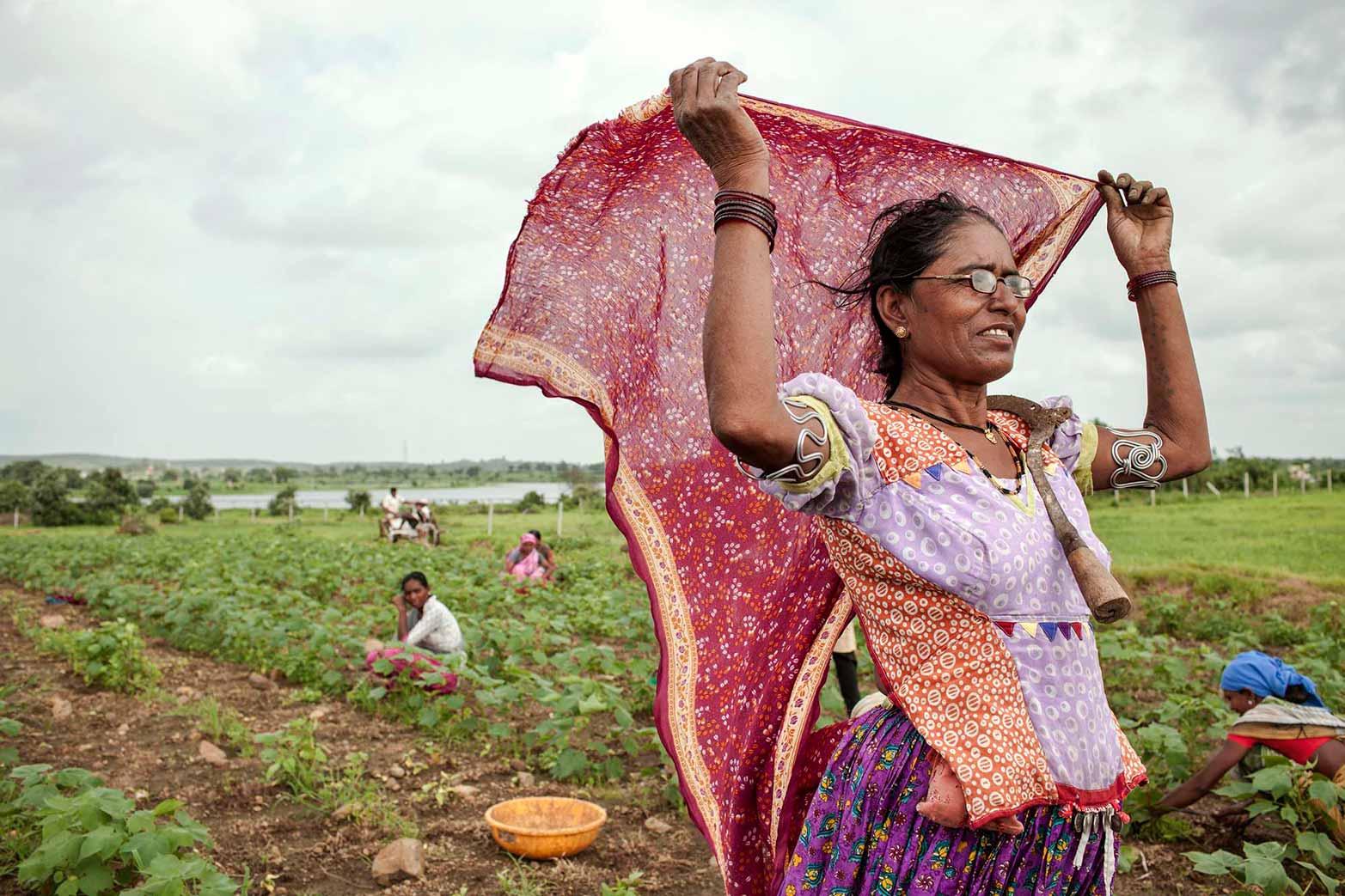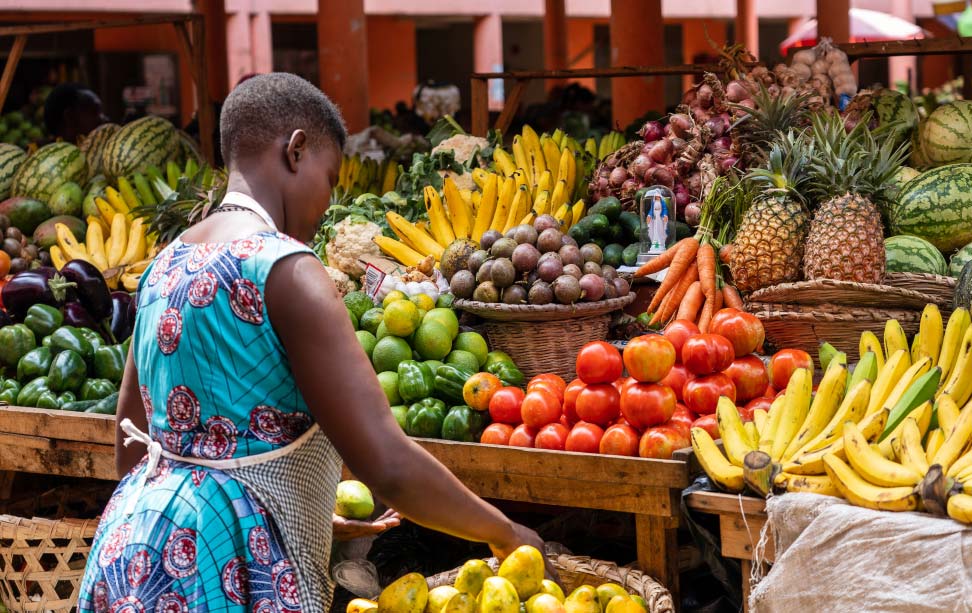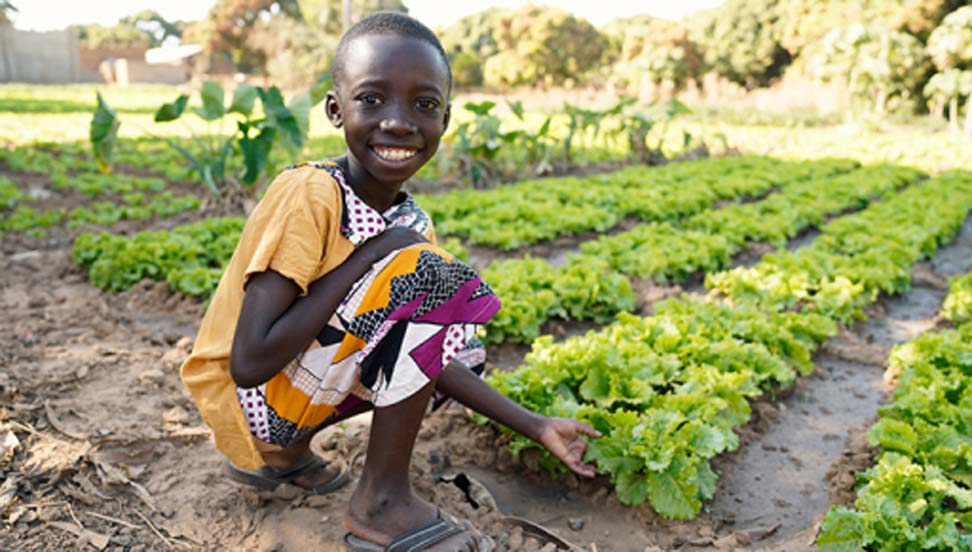
Publications and Datasets
IFPRI publications provide evidence-based insights and analysis on critical issues related to policies for food systems, food security, agriculture, diets and nutrition, poverty, and sustainability, helping to inform effective policies and strategies. Materials published by IFPRI are released under a Creative Commons license, and are available for download. IFPRI authors also publish in external sources, such as academic journals and books. Where possible we provide a download link for the full text of these publications.
Featured Publications
Working Paper
A good global investment for the United Kingdom: How investing in CGIAR reduces global poverty and benefits U.K. citizens
2025Hill, Ruth; Martin, Will; McNamara, Brian; Nia, Reza; Spielman, David J.; Takeshima, Hiroyuki; Vos, RobWorking Paper
A good global investment for the United States: How investing in CGIAR makes America stronger, safer and more prosperous
2025…more
Hernandez, Manuel A.; Headey, Derek D.; Hoffmann, Vivian; Kosec, Katrina; Martin, Will; Nia, Reza; Nin-Pratt, Alejandro; Piñeiro, Valeria; Takeshima, Hiroyuki; Vos, Rob; Zambrano, Patricia; Zhang, WeiJournal Article
Estimating multidimensional development resilience
2026Lee, Seungmin; Abay, Kibrom A.; Barrett, Christopher B.; Hoddinott, John F.Explore Our Latest Publications
Important: This website search is limited to displaying the 100 most recent results to ensure optimal performance. For access to the complete archive of IFPRI publications and resources, please visit the IFPRI Institutional Repository at https://cgspace.cgiar.org/.
By Title By Author By Country/Region By Keyword
Dataset
Tajikistan Rural Household Survey (TRHS) 2025
Journal Article
Armed conflict, community-based cash transfers, and social cohesion: Evidence from a randomized intervention in Ethiopia
Journal Article
Can a light-touch graduation model enhance livelihood outcomes? Evidence from Ethiopia
Journal Article
When prices spike: Identifying excessive volatility in fertilizer markets
Journal Article
Pork safety across Vietnam’s traditional markets: microbial contamination and vendor knowledge, attitudes, and practices
…more
Hung Nguyen-VietJournal Article
The effect of teacher training and community literacy programming on teacher and student outcomes
Journal Article
Agricultural technology adoption and deforestation: Evidence from a randomized control trial
Journal Article
Understanding social safety nets and intra-household food allocation: Experimental evidence from Bangladesh
Journal Article
The effect of using indigenous and scientific forecasts on arable farmers’ crop yields: Evidence from Rwenzori region, western Uganda
Journal Article
Transfers, information and management advice: Direct effects and complementarities in Malawi
Journal Article
Increasing women’s empowerment: Evaluating two interventions in Uganda
Journal Article
How much do our neighbors really know? The limits of community-based targeting
Journal Article
Constraints and promising interventions to strengthen fish seed systems in Sub-Saharan Africa: Evidence from Ghana
Journal Article
COVID-19 and rural livelihoods: Lessons from a longer-term assessment and the path to recovery
Journal Article
Estimating multidimensional development resilience
Book Chapter
Agricultural mechanization
Journal Article
Higher altitude stunts children’s physical growth: A systematic review and meta-analysis
Journal Article
How can anticipatory action programming support women? Application of the reach-benefit-empower-transform framework in Nepal and Nigeria
Journal Article
Exposure and disease burden of fumonisins and aflatoxins from sorghum consumption in Ethiopia
Journal Article
Vouchers to increase fruit affordability in Nigeria and Vietnam
Journal Article
Gendered networks and demand for an agricultural technology in India
Journal Article
Imperfect competition and asymmetric welfare effects of global price and productivity shocks: a CGE model analysis for Senegal
Journal Article
Understanding spatial heterogeneity of hidden hunger in Senegal
Journal Article
Step by step to higher yields? Adoption and impacts of a sequenced training approach for climate-smart coffee production in Uganda
Brief
Combine harvester subsidies and agricultural mechanization in Bangladesh: Recommendations for reform
Brief
How can community grants promote gender-inclusive development in fragile settings? Insights from rural Nigeria
Brief
Bridging the information gap: How Munda Makeover is transforming agricultural learning in Zambia
Brief
Digital tool integration, biodiversity, and the potato value chain in Kenya: Results from a baseline survey
Working Paper
Updating yield growth rates in the IMPACT model to enhance global analysis of the future of agriculture
…more
Dunston, Shahnila; Hartley, Faaiqa; Mishra, Abhijeet; Thomas, Timothy S.; Alene, Arega D.; Gbegbelegbe, Sika; Mjuma, Andrea; Enahoro, Dolapo K.; Petnkeu, Jeronya Mbiatat; Antonio, Ronald Jeremy S.; Cabrera, Ellanie; Basnet, Shyam; Gimutao, Maureen; Pede, Velerien; Chan, Chin Yee; Chung, Ka Yi Karen; Sari, Evren CanBrief
Realistic options for repurposing fertilizer subsidy spending
Brochure
IFPRI’s research in fragile and conflict-affected settings
Brief
Synopsis: Quantifying food losses in the beans value chain in Rwanda – Results from a baseline survey
Data Paper
IFPRI Nexus SAMs: Annual release note 2025
Brief
Biofuels in India: Trading off climate mitigation with water security goals
Working Paper
Nudging farmers toward disease-free shrimp technology with financial incentives: Experimental evidence from Bangladesh
Working Paper
Women’s empowerment and child nutrition in the Asia – Pacific region: Evidence from Papua New Guinea, Sri Lanka, and Timor-Leste
Brief
Kenya: Cost effective options for inclusive and sustainable development
Brief
Papua New Guinea food price bulletin: October 2025
Brief
From commitment to delivery: Implementation as the frontier for CAADP 3.0
Opinion Piece
What Indians eat, and how being unhealthy is easier and cheaper
Working Paper
Malawi’s agrifood system: Transformation and environmental impacts
Brief
Energy and macronutrient intake among women of reproductive age: Baseline findings from the FRESH End-to-End Evaluation
Brief
Bridging Nigeria’s fertilizer supply-demand gap for agricultural transformation
Brief
Digital agricultural technology in Egypt: Insights from app developers
Brief
Gendered work norms in Egypt: Evidence on preferences and social perceptions
Working Paper
The impact of genetically modified cowpea on yields, postharvest losses, and profitability in Nigeria: Findings from a cluster randomized controlled trial
Brief
Micro-, small- and medium-sized enterprises and their role in sustainable healthy diets in Ethiopia
Brief
Mozambique: Cost effective options for inclusive and sustainable development
Brief
The development potential of anchor enterprise models in Malawi
Report
IFPRI Malawi maize market report, November 2025
Brief
Internal displacement and the measurement of women’s empowerment: Evidence from a test-retest survey experiment
Working Paper
The landscape of youth engagement in labor markets in Africa: Are youth driving structural transformation?
Journal Article
Whole maize flour could enhance food and nutrition security in Malawi
Journal Article
How social norms influence processes of change related to an economic intervention in Bangladesh
Journal Article
Does small-scale irrigation affect women’s time allocation? Insights from Ethiopia
Journal Article
Integrating carbon sequestration and yield optimization in Indian cropping systems
Journal Article
The characteristics of community seed schemes for grains and legumes: Insights from northern Nigeria
Journal Article
Buyer-side gender discrimination in bargaining: Evidence from seed sales in Uganda
Book Chapter
The (un)affordability of healthy diets in South Asia and the implications for nutrition-sensitive food policies
Book Chapter
India’s agrifood system: Structural features and policy priorities
Book Chapter
Gender roles in South Asian food systems
Book Chapter
Adolescents in South Asian agrifood systems: Roles and aspirations
Book Chapter
Food environments and behavioral drivers of food choice in South Asia
Book Chapter
What are people eating in South Asia?
Book Chapter
Social safety nets for a nutrition-sensitive food system in South Asia: Lessons from India
Book Chapter
Consumption of foods high in fats, salt, and sugar in India: Prevalence, patterns, and policy imperatives
Book
The agrifood system in South Asia: Pathways to sustainable healthy diets
Journal Article
From data to decision: How the National Information Platform for Nutrition (NiPN) bridges the research-policy gap in Ethiopia’s nutrition sector
Journal Article
Household food production and dietary diversity in a remote, former socialist society: Panel data evidence from Tajikistan
Book Chapter
Evolving rural food environments in South Asia: The role of processed foods, traditional markets, and marketing influences
Book Chapter
Farming households’ adaptation to climatic shocks in South Asia: A food systems perspective
Book Chapter
Overview – Agrifood systems transformation in South Asia: An agenda for impact and learning at scale
Brief
Monitoring the impact of recent price volatility on food group consumption in Rwanda
Brief
Synopsis: Unlocking agricultural efficiency: A stochastic frontier analysis of smallholder farmers in Rwanda
Book Chapter
More land, more diverse diets? Exploring production and consumption trade-offs in the eastern Indo-Gangetic plains
…more
Sayem, Md Abu; Gathala, Mahesh; Krupnik, Timothy J.Brief
Harvesting change: The impact of climate change on Africa’s agriFood systems
Brief
When trade saves natural resources: Evidence from cereals trade in SADC
Brief
Rice productivity in Myanmar: Assessment of the 2025 dry season and outlook for the 2025 monsoon
Internal Document
IFPRI strategy 2026-2030: Food policy research for a changing world
Journal Article
Rice milling and parboiling trade-offs for economic and nutritional gains with special attention to sub-Saharan Africa: A comprehensive review
Journal Article
A measure of industrial clustering: Considering relatedness and scale
Journal Article
Optimal anthropometric discharge criteria from treatment of wasting: Meta-analysis of individual patient data from 34 studies
…more
Barthorp, Harriet; Becquet, Renaud; Belchior-Bellino, Valérie; Beri, Alemayehu; Berthé, Fatou; Bhandari, Nita; Bose, Anuradha; Burza, Sakib; Casademont, Cristian; Cazes, Cécile; Chaturvedi, Anuraag; Collins, Steve; Coulibaly, Issa; Cuneo, C Nicholas; Dansereau, Emily; Daures, Maguy; Diala, Udochukwu; Djibo, Ali; Escruela, Montserrat; Faal, Abdoulie; Griswold, Stacy; Guesdon, Benjamin; Guindo, Ousmane; Hien, Jérémie; Hossain, Md Iqbal; Hug, Julia; Iyengar, Sharad; Jasper, Paul; John, Collins; Kangas, Suvi T.; Kornetsky, Kenneth; Lambebo, Abera; Legese, Liya; Lelijveld, Natasha; Mahajan, Raman; Manary, Mark; Mohan, Sanjana; Myatt, Mark; Nabwera, Helen; Nackers, Fabienne; Nahar, Baitun; Olufemi, Adegoke; Patwari, Ashok; Phelan, Kevin; Rocaspana, Mercè; Rogers, Beatrice; Sadler, Kate; Salpeteur, Cecile; Sonko, Bakary; Soofi, Sajid; Taneja, Sunita; Tripathy, Prasanta; Wegner, DonnaJournal Article
Polycentric governance of commons through multi-stakeholder platforms: Insights from two case studies in India
Journal Article
Women as breadwinners: A multifaceted relocation program and women’s labour market outcomes
Journal Article
Agricultural innovation frames, policies, and instruments: Evolution, lessons, and future research
Working Paper
Regional implications of public investments and external shocks in Papua New Guinea: An economywide analysis
Working Paper
Public expenditure on agriculture, youth out-migration, and engagement in agriculture? Evidence from Nigeria
Working Paper
Bridging the gap: How human-centered design can help unlock bottlenecks in the diffusion of small-scale irrigation in Nigeria
…more
Ringler, ClaudiaReport
Essential commodities prices, availability, and market actors’ perceptions: October 2025
Working Paper
Rewriting the rules: How U.S. tariff paths could reshape global trade
Brief
Nutrition and dietary quality in Sri Lanka: Insights from the 2024-2025 BRIGHT survey
…more
Sabai, Moe; Stifel, Elizabeth; van Asselt, Joanna; Weerasinghe, KrishaniBrief
From pledges to action: NDC 3.0 for poverty reduction and climate justice in Nepal
Working Paper
Climate risks and agricultural changes in conflict-affected Myanmar
Brief
Accessing Aswesuma: Key findings on Sri Lanka’s new social protection program from the bright 2024-25 national survey
Brief
The effects of a secondary school scholarship on youth outcomes: Evidence from a randomized trial
Working Paper
Implications of increased urbanization and consumer awareness on future food supplies in Tanzania
Brief
Food insecurity in post-crisis Sri Lanka: Evidence from the 2024-2025 BRIGHT survey
Brief
Climate shocks and climate smart agricultural adoption in Sri Lanka, 2024-2025
Brief
The state of agricultural extension services in Sri Lanka, 2024-2025
Brief



